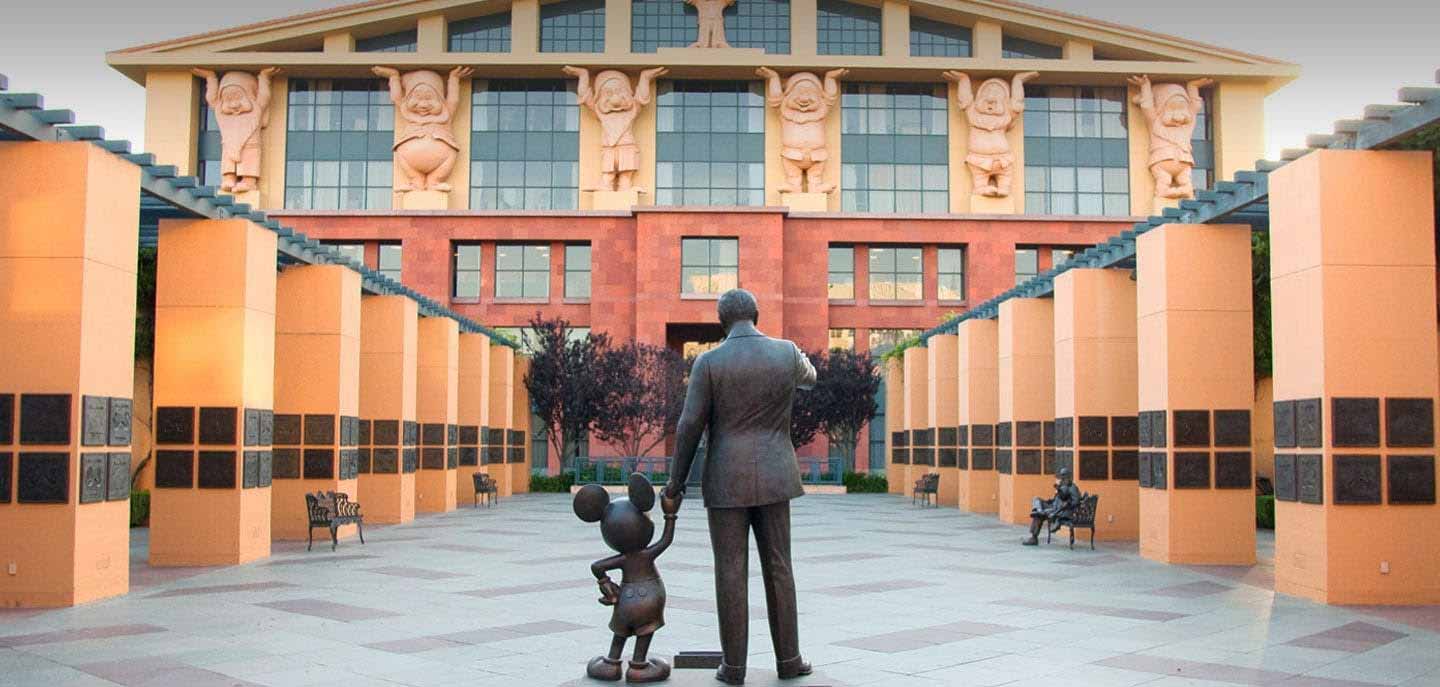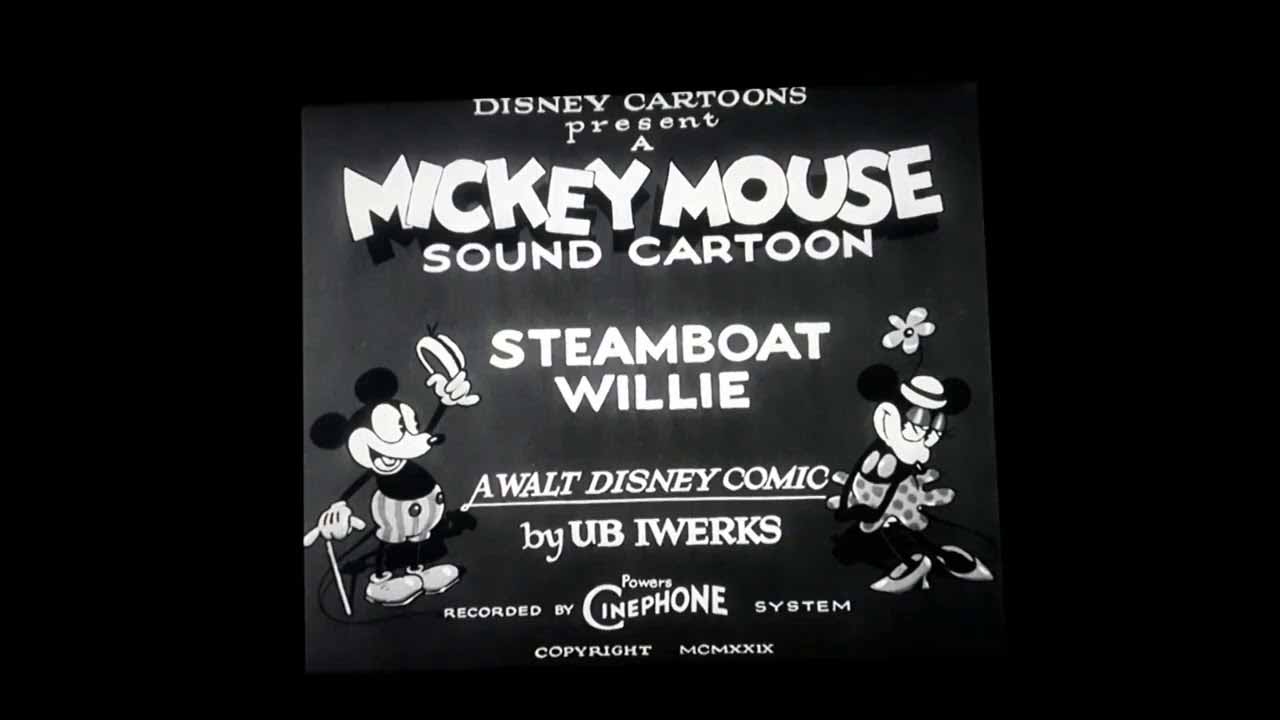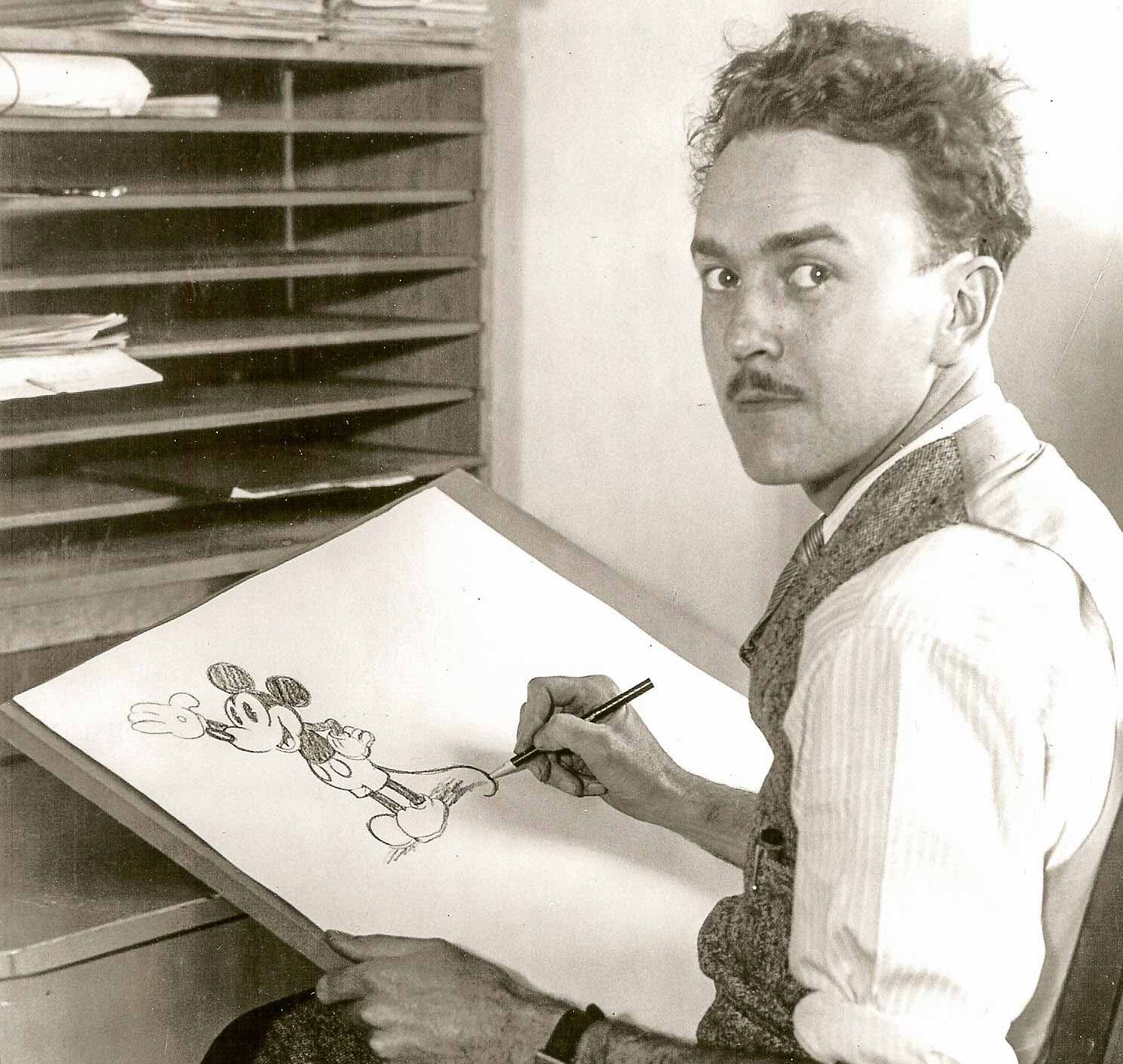Music ∷ Sam Porter
Show Artwork ∷ Nikolaos Pirounakis
Episode Artwork ∷ Lily Meek

Only 21 at the time, Walt Disney was the second youngest of five children to Elias Disney, an entrepreneur with terrible luck, and Flora Call Disney. When he was 18, Walt moved to Los Angeles in order to break into the movie business, but while he was initially interested in directing live action, the blossoming animation industry caught his eye. He was a sharp-eyed cartoonist, working as a commercial advertising artist, and along with colleague and friend Ub Iwerks, developed first the Laugh-O-Grams series and later the Alice Comedies, loosely based on Carroll’s Alice’s Adventures in Wonderland and combining animation and live action.
The success of the Alice Comedies brought about the Disney Brothers Cartoon Studio in 1923, later renamed Walt Disney Studio in 1926, and Walt Disney Productions in 1929. While business-savvy Roy kept an eye on the company itself, Walt and Ub were in charge of the creative output. Their major success came in 1927 with the creation of Oswald the Lucky Rabbit, distributed by Winkler Pictures through Universal, but in a devastating blow, Winkler studio head Charles Minz, who technically owned the rights to Oswald, set up his own animation studio, took a large number of the Disney animation staff, and began to develop Oswald shorts himself.
It was in this moment of desperation that Disney and Iwerks began to develop a new character, a series of circles and ovals that would become the most famous cartoon character in history, and thanks to the recent invention of sound, he would get one hell of a debut.

Steamboat Willie was the first Disney animated short with syncronised sound. Though partial syncronisation had been achieved in animation before, such as at the Fleitcher Brothers’ Inkwell Studios, this was the first to achieve proper syncronisation through the use of a click track, so that the sound and music could work together. It was directed by Walt and Ub, with Ub animating, and was the commercial debut of both Mickey and Minnie Mouse. Two earlier Mickey shorts had been finished but not released, with Walt wanting to take advantage of the sound technology demonstrated in The Jazz Singer in 1927.
The music was arranged by Wildred Jackson and Bert Lewis, and features the songs “Steamboat Bill” (whistled by Mickey at the beginning) and “Turkey in the Straw”, a song popularised by minstrelsy in the 19th century. The title is believed to be a reference to Buster Keaton’s film Steamboat Bill Jr. as well as the song.
Today, Steamboat Willie is perhaps the most famous animated short ever made, mostly as the introduction of the internationally beloved icon, Mickey Mouse.
- Fleisher’s Inkwell Studios had achieved partial syncronisation with their Song Car-Tunes shorts from 1924-1926, and Paul Terry released the financially unsuccessful Dinner Time a month before Steamboat Willie.
- Directed by Walt Disney and Ub Iwerks
- Two early Mickey Mouse shorts had been completed, Plane Crazy and Galopin’ Gaucho, but Disney stalled their distribution after the release of The Jazz Singer in 1927. He later developed soundtracks for them as well.
- Distributed by Celebrity Productions
- All voices performed by Walt Disney, though the short has no discernable dialogue.
- FOD means Freight on Delivery, COD means Cash on Delivery.
- Podunk, a hypothetical small town regarded as typically dull or insignificant.
- Controversy over time in regards to animal cruelty, and some versions had 30 seconds removed. All official available versions from Disney are uncut.
- Entered into the US National Film Registry in 1998.
The short was entered into the US National Film Registry in 1998, and has been central to discussions around copyright, almost entering public domain several times. At this stage, Steamboat Willie is due to enter public domain in 2023, but not Mickey Mouse himself. There are also arguments to suggest that, due to a misplaced credit, the film has already entered public domain.
Available on Disney+, on the Walt Disney Animation Studios YouTube channel and the U.S. Blu-ray release 'Celebrating Mickey' (2018).

Composer Carl Stalling pitched the idea to Disney in 1928, and over the next decade, the series would become a wild financial and critical success, permeating the popular culture with merchandising, iconic characters and hit music, as well as acting as a testing ground for new film and animation technologies, and winning seven Academy Awards for Best Animated Short. They would pave the way for the studio’s first feature-length animated film Snow White and the Seven Dwarfs in 1937.

The idea was part of Carl Starling’s pitch to Disney, who also composed the music for the short. Once again, Walt was the director of The Skeleton Dance, while Ub was the animator, completing the film in six weeks.
- Originally intended to use Saint-Saens’ “Danse Macabre”, but used original music instead.
- Had an initial limited run in June/July 1929, before being properly distributed by Columbia Pictures, who had a deal to distribute the Silly Symphony films.
- Was banned in Denmark in 1931 for being ‘too macabre’.
Available on the Walt Disney Animation Studios YouTube channel and the very rare DVD release of Walt Disney Treasures: Silly Symphonies (2001).

Determined never again to work with a character he did not own, Disney asked Iwerks to develop a new one which became Mickey Mouse. The first few Mickey Mouse and Silly Symphony cartoons, including Steamboat Willie and The Skeleton Dance, were entirely animated by Iwerks, but unable to cope with Disney’s difficult and uncompromising demands, as well as disgruntled by his partners’ tendency to accept all the credit, Iwerks and Disney severed their friendship in 1930, and the artist who had essentially laid the groundwork for what became the Disney style left the studio to establish his own.
- Wikipedia on Walt Disney, Ub Iwerks, Walt Disney Animation Studios, Steamboat Willie, the Silly Symphonies and The Skeleton Dance
- The Disney Studio Story, Richard Hollis and Brian Sibley, 1988
- Walt Disney Treasures: Silly Symphonies, Disney DVD
- American Experience: Walt Disney, dir. Sarah Colt, PBS, 2015
- Disney Animation: The Illusion of Life (Popular Edition), Frank Thomas and Ollie Johnston, 1984













